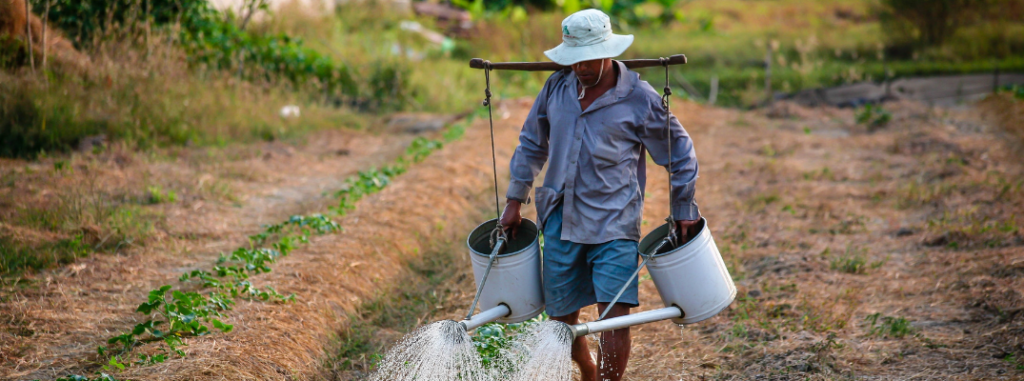In January 2016 the 17 Sustainable development goals of the 2030 Agenda for Sustainable development officially came into force. Since then, countries, Aid organisations, INGOs and other development related organisations have focused on the SDGs. Of all the goals, I have paid the most attention to is SDG2- End Hunger, Achieve Food Security and Improved Nutrition and Promote Sustainable Agriculture (Zero Hunger). I find it extremely sad that as at 2017 one in nine people were undernourished and Hungry.
Despite the rapid modernisation in the world, agriculture still remains the main source of income and livelihood for about 40% of the world’s population. The demand for food has continued to increase and has shown no sign of reduction as populations continue to rise and the increasing middle class now demand a more varied diet. If we are to achieve SDG 2.3 which states that by 2030, we are to double the agricultural productivity and incomes of small-scale food producers, in particular women, indigenous peoples and family farmers etc through secure and equal access to land, other productive resources and inputs, knowledge, financial services etc- then we really have our work cut out for us as nations and we need to get on with it.
The simplest definition of sustainable agriculture is that it is the production of food, fibre, or other animal and plant products using techniques that protect the environment, public health, human communities, and animal welfare. The major goal of sustainable agriculture is to meet the global demand for food, textile and other agro related products without compromising on the ability of future generations to meet their own needs. The objective of practicing sustainable agriculture is to achieve a healthy environment, economic profitability, and social and economic equity. For this to happen, all stakeholders in the agri-business sector will have to work hand in hand. Input suppliers and producers, growers, food processors, distributors, retailers, consumers, and waste managers all have a role to play in the sustainable agriculture process.
Transitioning Into Sustainable Agriculture.
Transitioning into sustainable agriculture is a process. As with every process in development there is no “one size fits all” and nothing will change immediately. The transition to sustainable agriculture requires taking a series of realistic steps, every small decision taken can make a difference and contribute to a more sustainable agriculture system.
- Natural Resource Management: modern agriculture has had a huge impact on natural resources for decades. The use of input-intensive practices combined with low efficiency eventually results in environmental problems such as soil degradation, pollution of groundwater, and excessive emission of ammonia and greenhouse gases. Steps have to be taken to reduce the use of nitrogen fertilizers, to create drought resistance systems, improving water conservation measures, using reduced volume irrigation systems.
- Soil Conservation: Soil quality decline and erosion continue to threaten the sustainability of future production of farmers. For food security to be attained, we need to learn how to manage the quality of the soil. Some practices that have been created to manage soil quality and keep the soil in place include; practicing crop rotation, reducing tillage, covering the soil with plants or mulch, and managing irrigation systems to avoid soil runoffs.
- Water Management: This involves managing the quality of the water and the quantity used and wasted. The contamination of ground and surface waters by pesticides, nitrates and selenium is a major issue for water management. There is also the problem of salinity, wherever water of even relatively low salt content is used on shallow soils in arid regions and or where the water table is near the crop root zone, salinity becomes an issue. To avoid such issues there needs to be a balance between the volume of water entering and leaving the ground water system. Also natural pest repellents should be adopted so as to reduce the contamination of ground water, as mentioned earlier the use of nitrogen fertilizer needs to the controlled too.
- Energy Management: modern agriculture as we know it is heavily dependent on non-renewable energy sources. This is adding to the climate change crisis and needs to be managed better. However, it is impossible to suddenly switch to an agriculture system that is fully powered by renewable energy, especially in parts of sub-Saharan Africa where there is still a lack of stable electricity and a heavy reliance on petroleum and diesel-powered generators. In sustainable agricultural systems, the reliance on non-renewable energy is reduced and substituted for more renewable sources like wind, water, solar or an increased use of labour as long as it makes economical sense.
- Air Quality Management: it has been established that agriculture is a major contributor to climate change and the emission of greenhouse gases, this is particularly true of livestock farming. Many agricultural activities affect the quality of the air. These include dust raised from tillage, residue from pesticide spraying, nitrous oxide emissions, and smoke from agricultural burning (especially bush burning which is wildly practiced in several parts of the world)
While these are by no means exhaustive, they are a good place to start. One thing is clear, the current agriculture system is not sustainable nor can food security be attained at this rate without irreparable damage being done to the planet.

